A Sacred Farewell: Honoring William Mahrt and His Legacy in Sacred Music
Stanford Musicology Professor Mahrt dedicated his life to preserving the Church’s traditional sacred music as part of the liturgy
RIP William Peter Mahrt (March 9, 1939—January 1, 2025)
Renowned Sacred Music Scholar William Peter Mahrt, professor emeritus in musicology at Stanford University, died at age 85 on January 1, 2025, on the Solemnity of Mary, Mother of God. Fittingly, although quite unusually, his last days in Stanford Hospital's ICU, his wake, his funeral, and even the reception afterward—were all accompanied by the singing of the Church's traditional music, which he championed.
The singers who kept Professor Mahrt company during his last days included many current and former members of the St. Ann Choir of Palo Alto, which Mahrt joined in 1963 when it was just starting. He served as the choir’s director for most years, starting in 1964. Also visiting were past and current members of the Stanford University Early Music Singers, which Mahrt founded 52 years ago and directed until he retired at the end of the past academic year.
San Francisco's Archbishop Salvatore Cordileone was among the hundreds who were praying for him in his final hours. After Mahrt's death, the archbishop said, “I and so many others, have lost a dear friend. We have lost a giant of a man, a legend as a scholar of music, a true gentleman and one of the finest and most faithful Catholics I've ever known. The successful revival of Gregorian chant and sacred polyphony in this country owes much to the gifts, the generosity and the persistence of this great human being."

Mahrt was also the President of the Church Music Association of America (CMAA) and publisher of the CMAA’s Sacred Music journal and the New Liturgical Movement. He was known both nationally and internationally as a scholar and teacher who dedicated his life to the preservation and continual performance of the Church's traditional sacred music in the Mass and the Divine Office.
His admirers included the late René Girard, eminent French philosopher and literary critic. Girard was one of only 40 members, or immortals, of the Académie Française. Girard taught at Stanford for many years, and—along with his wife Martha—regularly attended the Mass at St. Thomas Aquinas Church in Palo Alto at which the choir sings.
“When I first attended, I assumed that the Catholic Church and the University actively supported this unique contribution to the spiritual and cultural life of the community. The truth is that ever since 1963, Professor Mahrt has been very much on his own in this enormously time-, talent- and energy-consuming enterprise.” —Quoted in Noteworthy: On Wings of Song at Stanford Magazine by Cynthia Haven.
Ted Gioia is perhaps an even more unexpected person than a philosopher like Rene Girard to praise a sacred music expert. Seven years younger brother of poet Dana Gioia, Ted Gioia is an expert on jazz. He is also a perceptive social critic with a popular Substack The Honest Broker.
Ted studied at Stanford, where he earned a B.A. in 1979 and an M.B.A. in 1983. He wrote this about attending the Masses where the St. Ann Choir sang under Professor Mahrt's direction:
“I’m still in awe of his choirs. They sing with seraphic authority.
“I heard his choir regularly at St. Ann’s Chapel and St. Thomas Aquinas Church. Those experiences still rank as my gold standard for liturgical music. I wish everybody could be blessed with the chance to experience this music in person and in the proper setting.
“He is still my eminent authority. I am still that admirer from afar. And will remain one. It’s good to still have role models at my age—and I’m blessed with one who still inspires me in a way that transcends the music.
“That’s what music should always be about—transcendence and reaching beyond performance into the depths of our lives. Most of us, if we’re lucky, get a tiny taste of that on rare occasions. But, as far as I can tell, William Mahrt lives in that realm. His music is an invitation to all of us to join him.”
Mahrt worked to combat a widespread misunderstanding that the Second Vatican Council had outlawed the Church's traditional music. As he frequently emphasized, Vatican II never mandated that the rich treasury of Gregorian chants and polyphonic hymns in Latin should be abandoned. On the contrary, they were held up as being intrinsic to the Mass and uniquely suited to Catholic worship.
Even during the decades following the Council, when traditional sacred music of was virtually banned, his St. Ann Choir continued performing Gregorian chant and Renaissance polyphonic music during Masses in diocesan Churches. It is important to realize, these were not traditional Latin Masses but Masses according to the contemporary Roman Missal, celebrated in Latin in accordance with the principles in Sacrosanctum Concilium, Vatican II’s Dogmatic Constitution on the Sacred Liturgy.
Kerry McCarthy, a scholar, singer, and a biographer of English Renaissance composers William Byrd and Thomas Tallis, is a former graduate student of Professor Mahrt, who earned her Ph.D. in 2003. In her book, Liturgy and Contemplation in Byrd's Gradualia, in the Acknowledgements, she thanked Mahrt for teaching her “to think with the liturgy.”
For many years, McCarthy when she was a graduate student and when she was on vacation from her professional teaching and singing joined several choir members and friends on Sundays to sing the liturgical hours of Lauds (until recent years), Vespers, and Compline under Mahrt's direction.
In November of 2023, the Catholic Institute of Sacred Music held a conference titled, “The Musical Shape of the Liturgy: Celebrating the Life and Work of William P. Mahrt” to honor his many scholarly achievements. The event also celebrated the 150th volume of Sacred Music, the 60th anniversary of the St. Ann Choir, and the establishment of the "William P. Mahrt Chair in Sacred Music" at St. Patrick’s Seminary in Menlo Park.
On a typical Sunday midmorning, Professor Mahrt, Bill, as he liked to be called, would usually leave his Stanford condominium to lead the pre-Mass rehearsal of St. Ann Choir. But on Sunday, December 29, some neighbors came across him seated on a sidewalk outside his condominium, where he had apparently collapsed on his way to his car, and they called an ambulance for him.
As many choir members knew, Bill had lived for decades with slow-growing prostate cancer, and the cancer had metastasized to his kidneys. At the hospital, Bill was diagnosed with kidney failure and given dialysis.
After the news spread that Mahrt had been admitted to Stanford Hospital that Sunday, a steady stream of friends and admirers kept vigil at his bedside. Retired diocesan priest, Father William Morgan, who often celebrates Masses at which the choir sings was also present during Bill’s last day. Although Bill was a life-long bachelor and his surviving family members could not be located until after his death, he was never alone. As his remaining sister Susan Perkins-Smith later remarked, the St. Ann Choir and others who have been inspired by him are his family, and they gathered the way a loving family does to help their brother in his final hours.
It would be hard to imagine anyone who was more accompanied spiritually, and most appropriately, he was also accompanied by the Church's music that he loved.
Father Morgan led prayers at Bill's bedside. He gave Bill the Anointing of the Sick and Holy Communion while he was still conscious. Sometime during that first night in the hospital, Bill had a massive stroke and lost consciousness. On Monday December 30, in the evening Father Pawel from St. Raymond's Parish came and gave him another anointing and the Apostolic Pardon.
Early in the morning of December 31, New Year's Eve, doctors predicted Bill would be dead in a few hours, but he lived through that day and the following night. In the morning, a few choir members sang the office of Prime at his bedside along with Father Morgan. Later that day, Father Morgan once again led the prayers of the Apostolic Blessing, and those who were present sang three of the choir's favorite polyphonic motets.
It was a custom for several decades on New Year's Eve, for Mahrt’s choir to chant the first Vespers of the Solemnity of Mary, Mother of God, in a public service at the St. Ann Chapel. This year, the public Vespers were cancelled. Instead, Vespers was sung at Bill's bedside by twelve who were in the room and another twelve joining virtually via ZOOM.
After Bill's heart stopped at 4:10 p.m. on New Year's Day. Father Morgan prayed the traditional prayers said immediately after a person dies. Those present sang the "Nunc Dimittis," the canticle of Simeon, which begins "Now thou lettest your servant depart in peace"—followed by chants from the Requiem Mass.
Bill's wake was also musical in an extraordinary way. The wake was held in St. Thomas Aquinas Church in Palo Alto, where the choir sings, not at a funeral home, and though Bill's body was present, eulogies were not said that evening. Vespers and Compline were sung. Between the two hours, the usual rosary was recited
Bill's funeral was held in the San Francisco's Mission Dolores Basilica. Former Governor Jerry Brown, who often joins choir members and friends on Sunday nights for Compline over ZOOM, was among the mourners.
The Solemn High Requiem Mass, with Father Morgan as the principal celebrant, was accompanied by Gregorian chants and polyphonic hymns sung by 70 singers who came from around the country. Many of the singers had taught, studied or sung under Mahrt’s direction at events sponsored by the CMAA. The singers were directed by three of Mahrt's colleagues from the CMAA: Horst Buchholz, Jennifer Donelson-Nowika, and David Hughes.
But the music wasn't over even when the funeral was over. At the reception after the Requiem, there was a “Motet Sing along.” Alternating with individual remembrances, five of the St. Ann Choir's favorite motets were sung: Sicut Cervus, O Magnum Mysterium, O Salutaris Hostia, and Caeleste Beneficium.
Caeleste Beneficium's connection to the choir has an interesting story behind it. Because Celeste Beneficium is a motet about about St. Ann, it’s kind of the St. Ann choir’s anthem. Bill often said that the choir managed to survive the way it did for sixty years only by St. Ann's intercession.
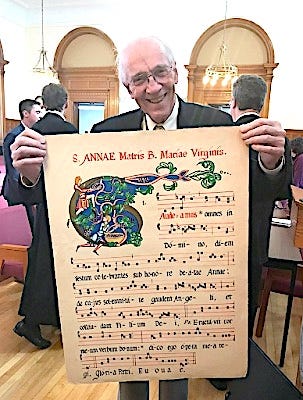
Kevin Rossiter, a former choir member, said that once when Bill was on a visit to the British Library, he had hand copied the Caeleste Beneficium motet from The Royal Choirbook, which was created for King Henry VIII. At the reception, everyone sang from photocopies of Mahrt’s hand-copied score.
If there were flights of angels singing William Mahrt to his rest, there was a choir of living choristers also singing along.
***
Bill’s body was interred at a mausoleum at St. Michael's Abbey in Silverado, California on Monday, 27 January 2025.
You can view the funeral toll here
the aspersion here
entombment here.
On Sunday January 26 from 4-6 p.m. the Benedict XVI Institute founded by Archbishop Cordileone is hosting an event in San Francisco, "In Memory of Bill Mahrt: An Evening for Artists and Art Lovers." See this link for details and to register if you are interested and able to attend.

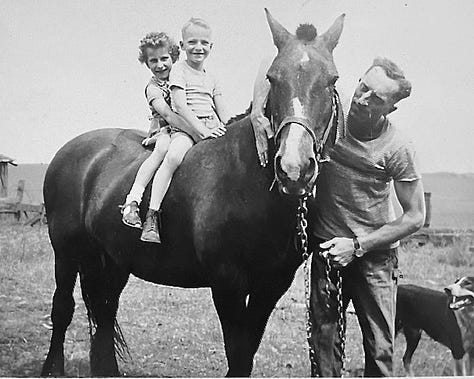

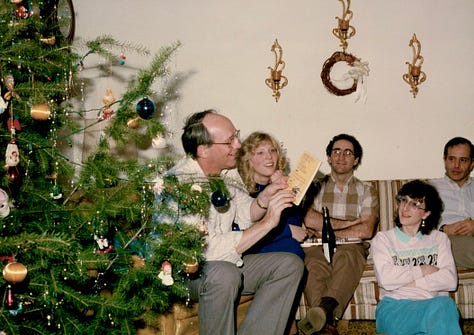
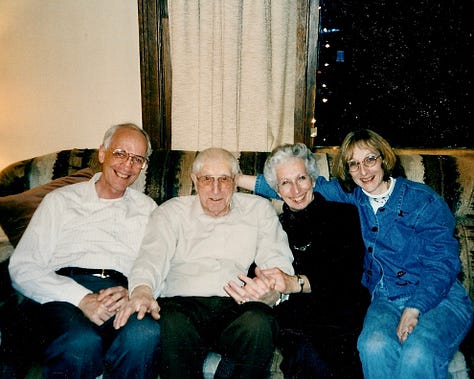
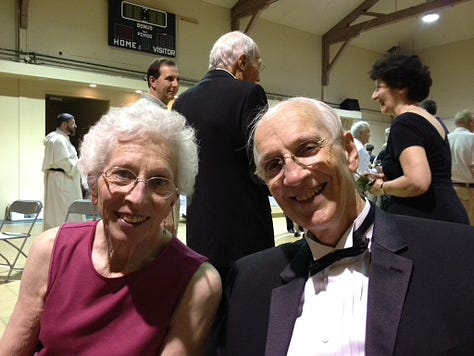
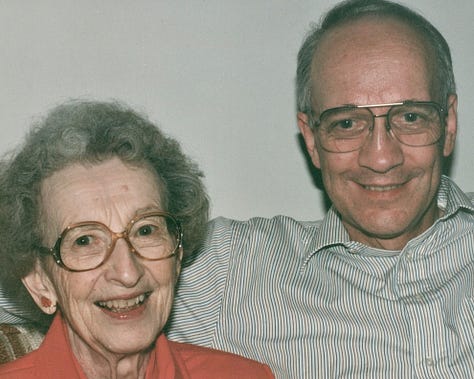
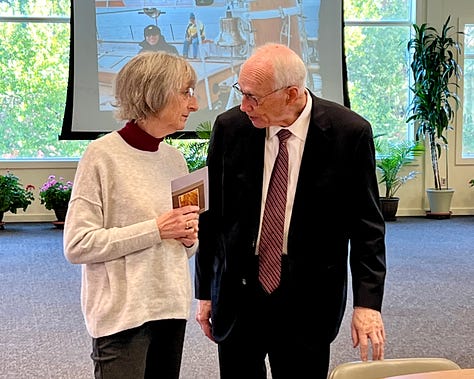

A shorter version of this article was published as A Sacred Farewell: Honoring William Mahrt and His Legacy in Sacred Music at the National Catholic Register on January 25, 2025.
More Information
The following link is to the introduction to a Substack devoted to “The Remarkable Sixty-Year Survival of Professor Mahrt’s St. Ann Choir.” It has lots more photos.
This link is to the slides for the talk, “The Remarkable Sixty-Year Survival of Professor Mahrt’s St. Ann Choir.” The slides include extensive notes.



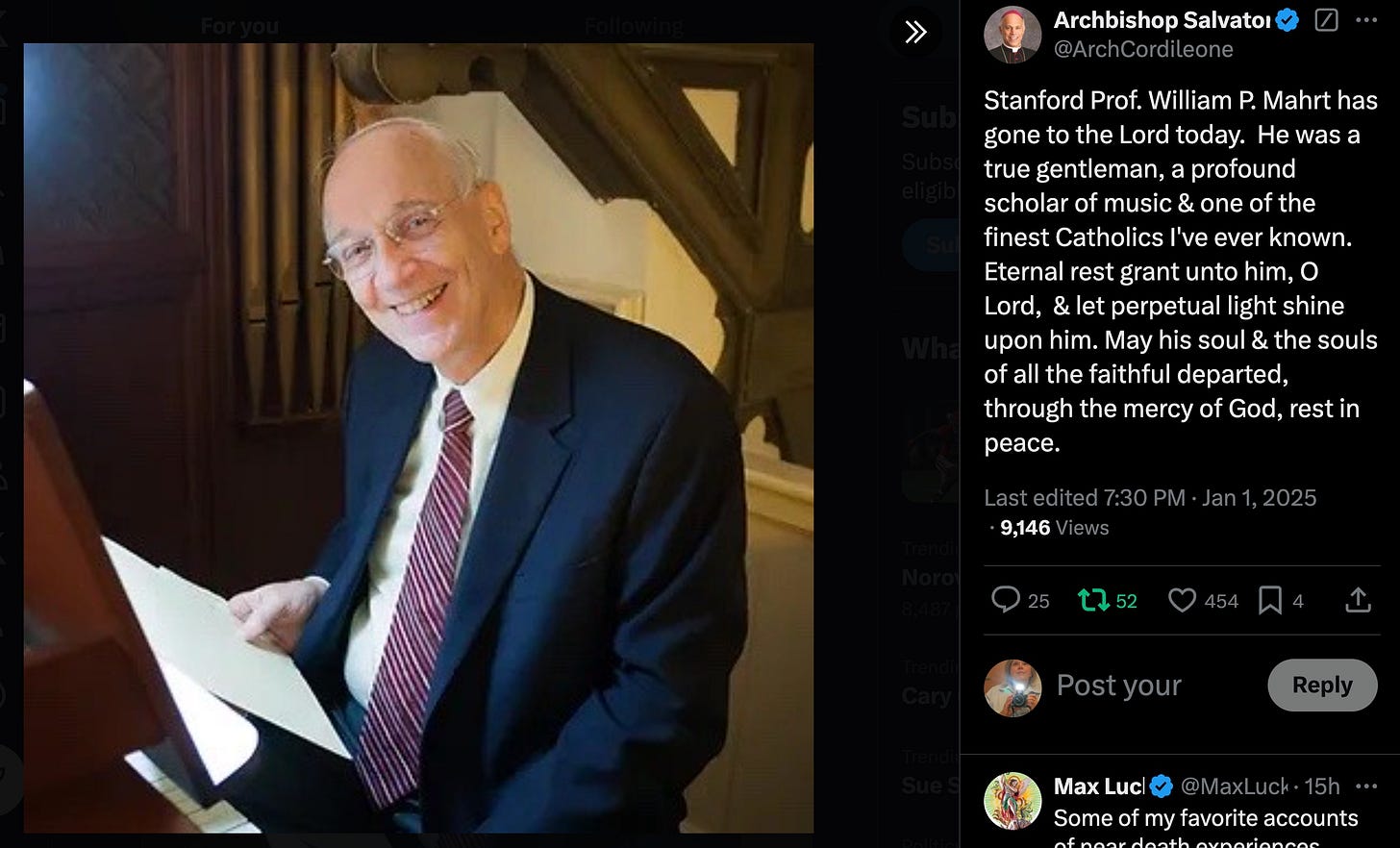
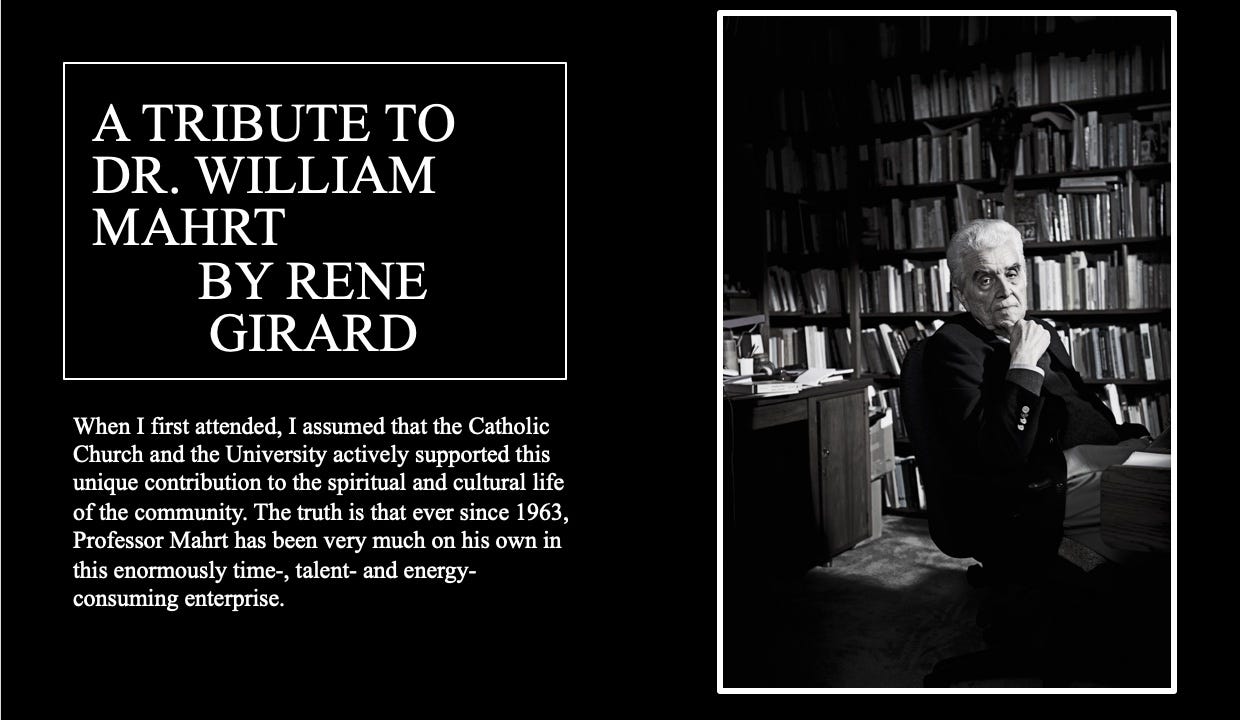
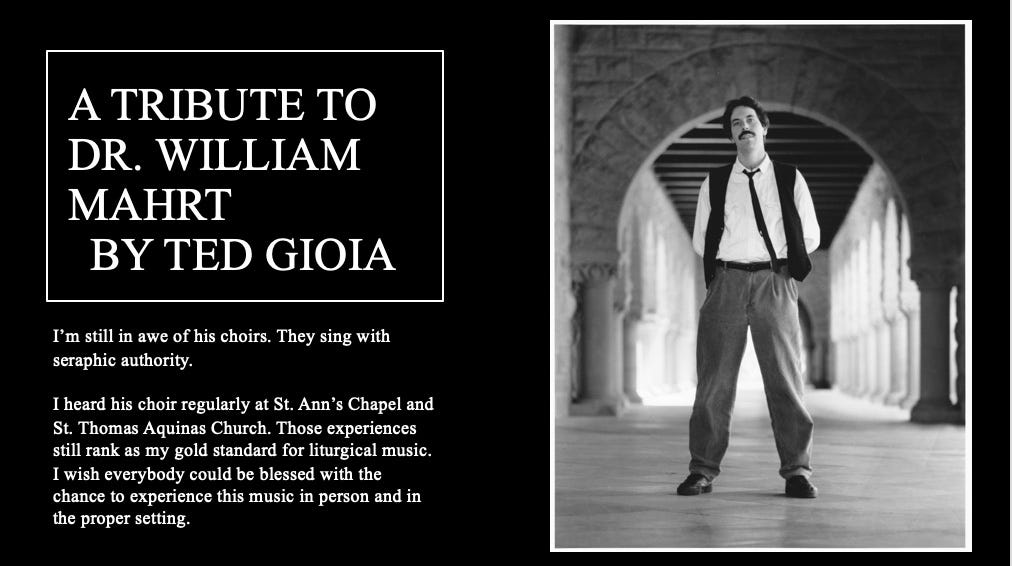
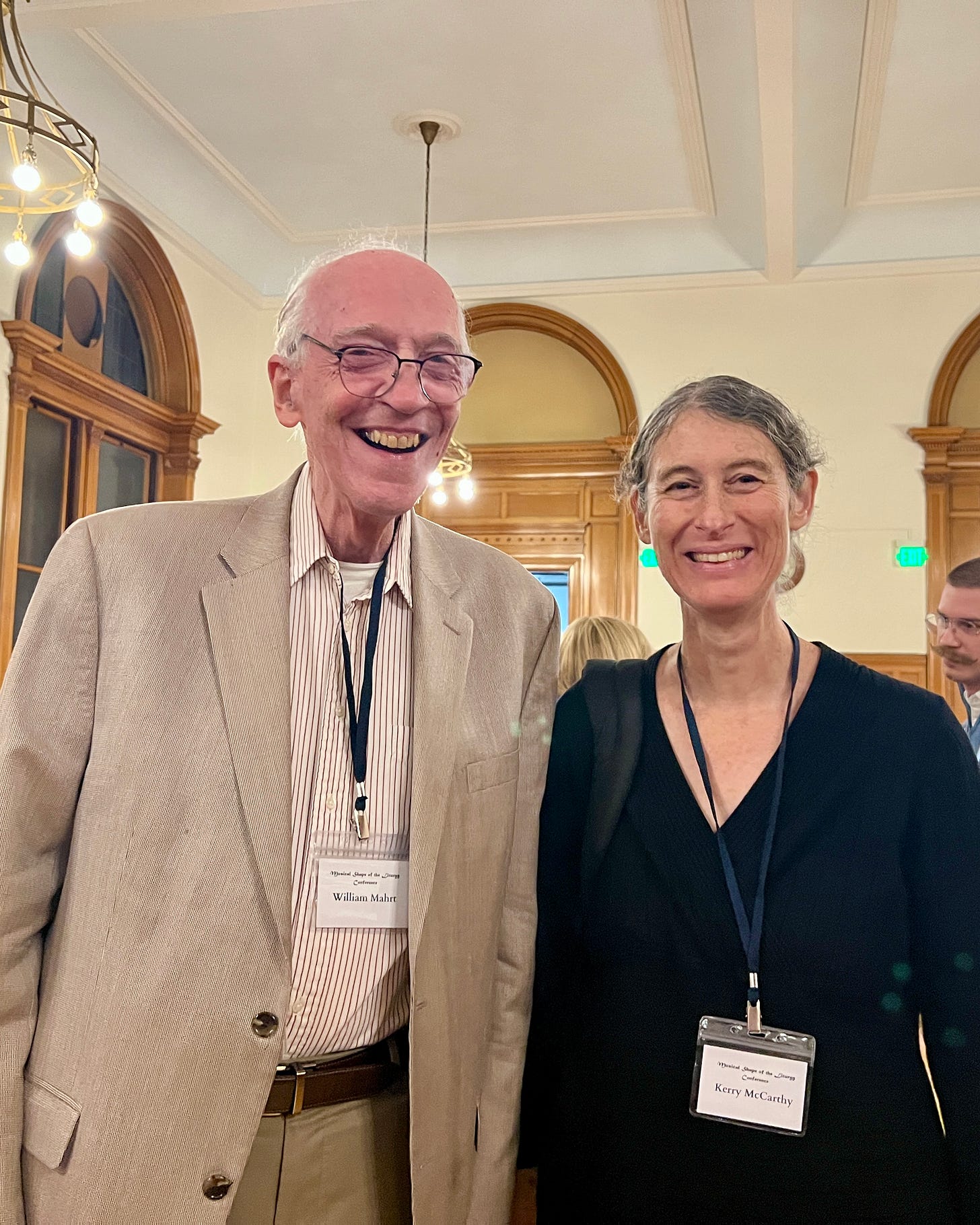


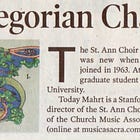

I’m sorry that you did not hear about the arrangements for Prof. Mahrt's wake and funeral.
The wake was on Thursday, January 9. The funeral was on Friday, January 10.
Today Bill’s family notified the choir that he will be buried at St. Michael's Abbey in Silverado, California on Monday, 27 January 2025 at 12:30 pm. Father Prior of the Abbey has communicated that the service will be very short and simple. Anyone who wants to attend may do so, but let the Abbey know if you intend to, at info@stmichaelsabbey.com.
From email:
On Jan 26, 2025, at 1:00 AM, Hiu Ho wrote:
When was his funeral and memorial service? I did not know I would’ve attended.
Wow. Sounds like an amazing man. Eternal rest grant unto him, O Lord!